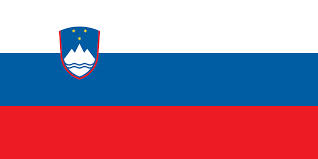Market and regulatory overview
In June 2011, Slovenia had a broadband penetration rate of 60.7% of households. There are three major broadband providers, led by Telekom Slovenije (TS) (42.7%), T-2 (18.9%) and Telemach (16.3%). Tus Telekom, Amis and other smaller broadband providers make up the remaining 22% market share At the end of September 2010, 62.1% of broadband connections were provided over DSL, with 22.3% delivered via cable and 15% via FTTx12. In 2010, Slovenia had 55% and 51% household coverage of FTTH and FTTC respectively, and had the third-highest percentage of homes passes by FTTH/B across Europe (44%). However, take-up of fibre was low. APEK has included fibre in Market 4 and has enforced mandated access on in-house wiring, dark fibre, manhole and concentration points and ODF. A long-run incremental cost (LRIC) approach to costing has been adopted13.
More than EUR82 million (USD110 million) of public funding has been allocated to broadband development in Slovenia, with a focus on “white spots”, areas where there is no commercial interest in deploying broadband. To date, funds have been used in areas that were chosen via two competitive funding activities – GOŠO 1 and GOŠO 2. GOŠO 1 saw the coverage of 15 921 households in white spots by December 2010 at a total project value of EUR60.8 million (USD81.4 million). GOŠO 2 will enable five projects to be undertaken, which are expected to provide highspeed broadband onnectivity to 13 497 households in white areas, at a cost of EUR36.8 million (USD49 million).
Current and planned FTTx deployments
TS and T-2 are both deploying PTP FTTH infrastructure. In contrast to the position in the overall broadband market, T-2 is leading the deployment of FTTH: it had covered 300 000 sites by mid-2010, compared to 110 000 sites from TS14. TS switched on a pilot VDSL network in 2007 and by December 2009, 335 locations had been upgraded on the VDSL network. Though only 110 000 sites were passed with FTTH by mid-2010, TS aims to cover 560 000 households (70% household coverage) by 2015.
T-2 began its roll-out of FTTH in January 2007. It is investing heavily in a nationwide IP network that combines VDSL2 and FTTH. By January 2010, T-2’s FTTH connections were live in 11 cities, with work ongoing to expand availability in each of these and to extend to 21 other cities. With investment by these two operators, FTTH/FTTB coverage has reached over 40 out of 210 municipalities in Slovenia by the end of 2011.
Architecture, configuration, equipment and costs
TS and T-2 are deploying P2P networks. TS is focusing on scalability, adaptability for new services and QoS13, while TS prefers P2P as it provides a simple end-to-end Ethernet architecture with mass-market CPE availability. T-2 is also focusing on scalability and QoS, and the benefit of guaranteed bandwidth levels15. TS has chosen Iskratel to supply equipment for the FTTH roll-out16. T-2 has chosen Extreme Networks to provide core and edge switching for the P2P network15.
TS is deploying two fibre cables to each customer premises. One cable is for IP connectivity (broadband, VoIP, IPTV) and feeds into the FTTH modem at the customer premises. The other cable is used to transport the cable-TV signal. T-2 is also providing each customer with a pair of fibre cables.
TS is investing EUR450 million (USD602 million) to achieve its target coverage of 560 000 households17. This indicates a cost per household of USD1075. Generally, TS has quoted several costs per household of FTTH deployment: EUR970 (USD1299) (without civil works, 2007), EUR1310 (USD1754) (urban, including some civil works, 2008), EUR1860 (USD2490) (rural, including some civil works, 2008).